Most people will agree that consistency can bring smoother experiences, transitions, and more predictable expectations. On the other hand, being inconsistent can promote confusion, delays and disappointments.
Consistency helps you stay on track toward your goals, and helps to develop discipline and self control. It can lead to increased progress and promote confidence. Through repetitive, sustained efforts, a habit of consistency can take you to a higher level.
Greek Philosopher Aristotle gave us these timeless words of wisdom,
“We are what we repeatedly do. Excellence, then, is not an act, but a habit.”
So, what can you do to become more consistent in your daily routine? What kinds of actions might help to develop the skills and incentives to become more consistent?
Here are 5 habits you can develop to help master consistency.
Habit #1. Time Your Tasks
Dedicate a fixed time slot for a specific task each day to establish a routine. When you have a pre planned schedule, you are more likely to do each job in an efficient and timely manner.
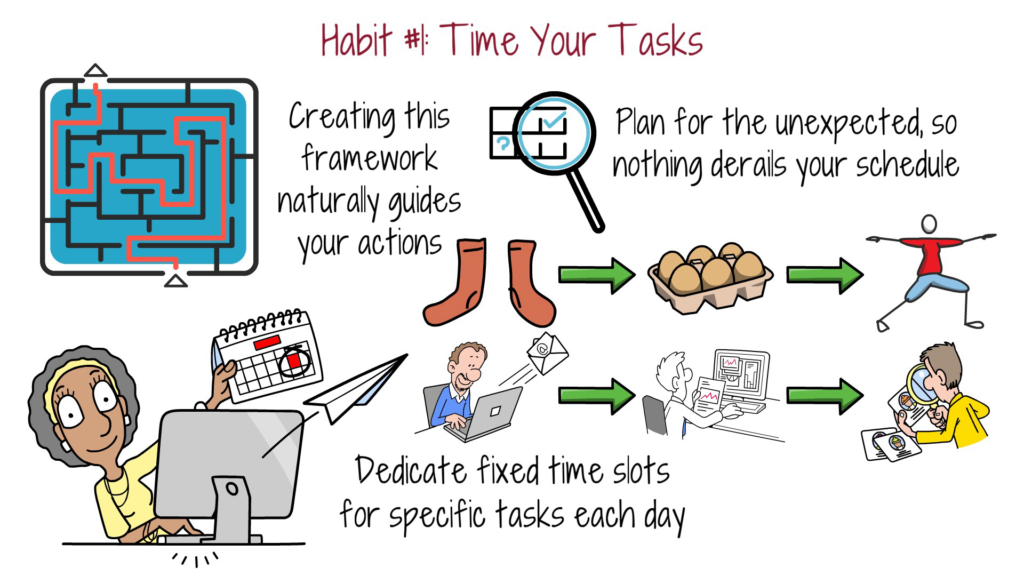
For example, set up your schedule in blocks of time of 15 to 30 minute intervals. Then fill in the spaces with the tasks you want to complete. Be specific in naming your tasks. A morning task schedule might include things like getting dressed, eating breakfast, and some form of movement like yoga or following an exercise routine. Estimate how long each task will take, and allow that much time on your schedule.
Do the same type of task timing with your work projects. Some tasks will need longer time periods, and some may even need to be broken down into smaller 15 minute slots that can be revisited over several days. For example, if one of your tasks involves sorting through bookshelves or cupboards, it may seem overwhelming. But If you work on it consistently each day, the task will get done over time.
Schedule a few unfilled “2 minute slots”, for some “quick picks” that can be done in a short amount of time. By leaving room on your schedule for the unexpected things that may pop up throughout the day, you can consistently finish everything that comes your way.
Once you’ve established a routine, it’s important to FOLLOW it! By repeatedly following your schedule, you can create consistency in completing your goals.
Habit #2. Get it Done
Sometimes the dread of doing a task uses up more time and energy than doing the task itself.
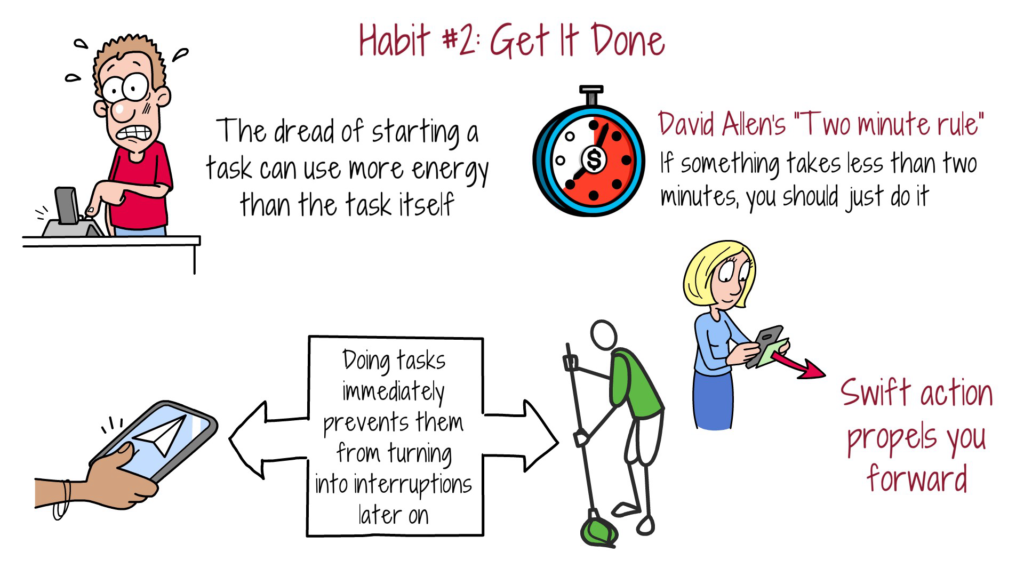
In his book, Getting Things Done, Author David Allen suggests using the “two minute rule.” He writes,
“Much of the stress that people feel doesn’t come from having too much to do. It comes from not finishing what they’ve started.”
If something takes less than two minutes to do, then just do it right away. Don’t let things stack up on your plate. You can still continue to follow your pre planned schedule. But by adding them into one of your “quickpick” 2-minute slots, it can give you time to do the job without getting off track from the rest of your schedule.
If you can do something quickly, you can avoid persistent interruptions. If you can “get it done”, it won’t be nagging at you while you’re trying to do other tasks on your list.
When you are able to finish things on a regular basis, you strengthen your skills in consistency.
Habit #3. Prioritize your Tasks
Mastering consistency involves thinking about what you need to do and which tasks are most important. Then, doing them one at a time, in order of priority.
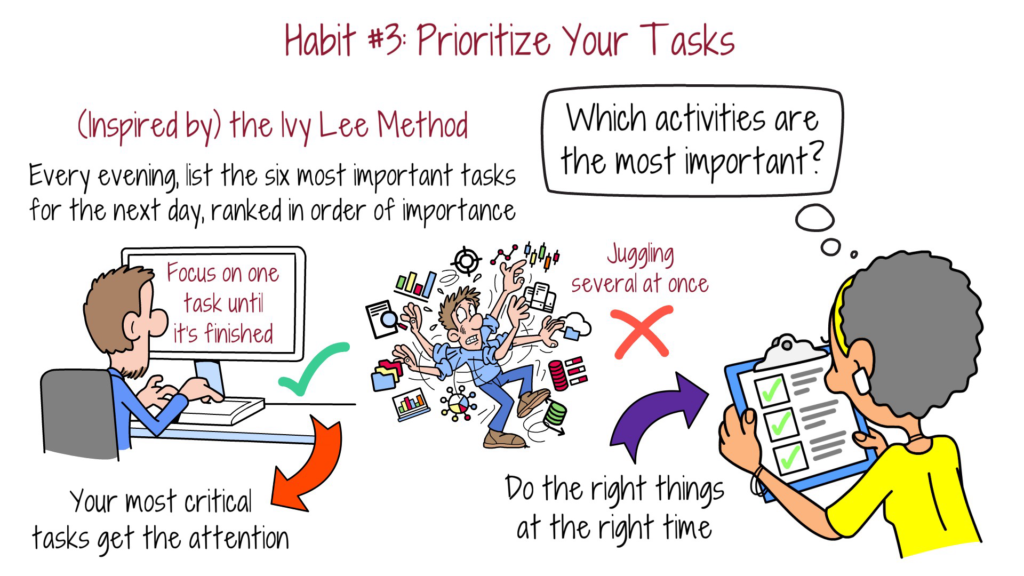
Paul Foster, CEO and founder of “The Business Therapist”, writes,
“Focus on one task at a time– He who chases two rabbits catches neither.”
One way to organize your tasks is called The Ivy Lee Method. Make a list of your 6 most important tasks for the following day. Put them in order of most important, to least important. Complete one at a time and don’t move on till you’ve finished what you’re doing.
When you use this method along with Task Timing, you can arrange your schedule in advance, making sure to prioritize your important tasks. Not only do you have a time slot assigned for each task, but it also saves time because you already have a plan for the day before you even wake up.
By using a method of prioritizing your tasks, you can become consistent in completing them.
Consistent planning and prioritizing leads to consistent success.
Habit #4. Avoid Zero Days
Making progress every day, no matter how small, will make a big difference. By doing something each day that contributes to the process, you master consistency with forward momentum.
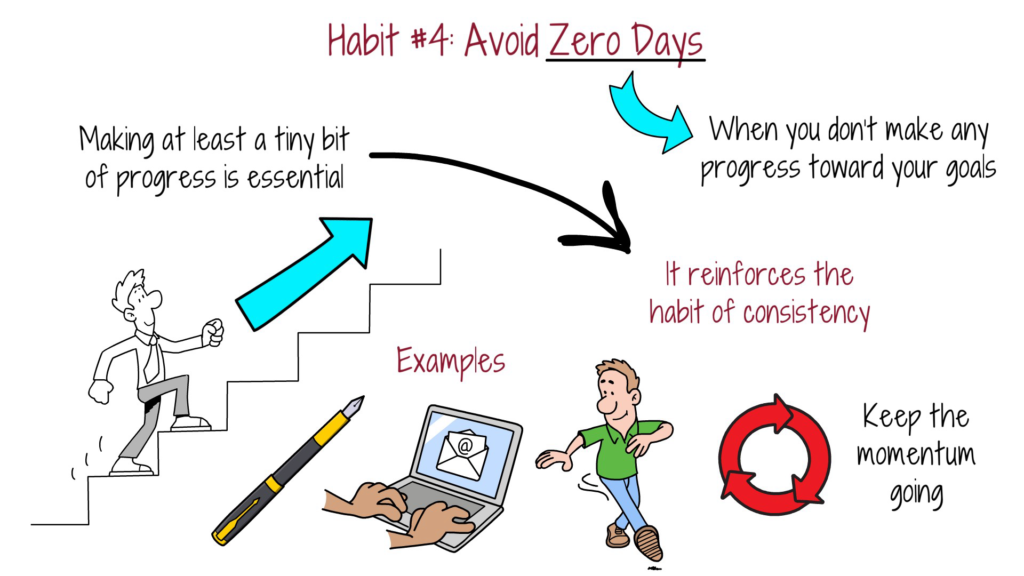
If you allow yourself to be distracted or discouraged, and not follow your plan, it could be more difficult to maintain a consistent flow toward your goals. Don’t wait until you “feel” like it. And don’t allow negative self-talk to throw you off course.
When you schedule your daily tasks and routines, be sure to have blocks of time for rest and recreation on a regular basis. That way, you won’t get burned out and throw the whole schedule out.
Breaking your cycle of productivity can bring your momentum to a screeching halt. So be sure to do something every day that brings you closer to your goal of consistency.
Habit #5. Create Visual Reminders
Creating a visual representation of your goal can keep you consistently focused.
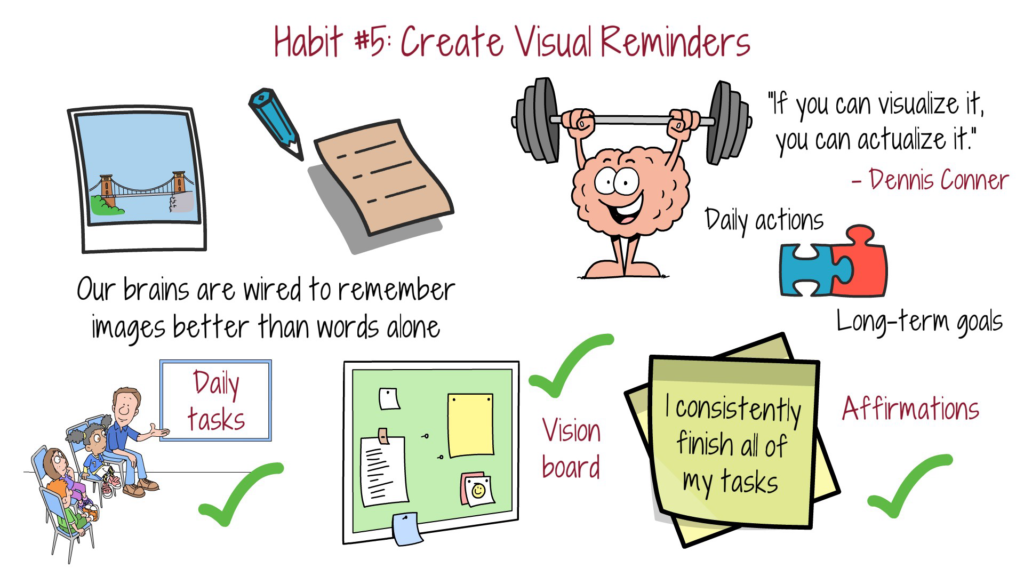
Research shows that visual cues enhance learning and retention, and visual images can be memorized and easily recalled.
For example, think of a place you visited on your last vacation. Does a specific picture of that place come to mind? Or even when you think of something that someone said to you yesterday, you will most likely visualize that person speaking to you.
One way to create a visual reminder is by using a whiteboard. Map out the steps you’ll take to reach a particular goal. The action of seeing the path you’ve charted can help you to be consistent as you take each step along the way and don’t get off track or forget what’s next.
When you have a visual representation of your plan, you can see the project in its entirety, and see how far you’ve come, and how far you have left to go. Tracking your progress can help to let you know if any changes need to be made along the way.
Another way to use visual cues is known as a “vision board.” Create a collage of pictures and words that illustrate your goals and aspirations. A spoken word may not be as memorable as a visual cue, but a written word still provides the image that represents the thought behind the word.
Put it in a place where it will be viewed often throughout the day. Each time you look at your vision board, you are consistently reinforcing the images in your brain.
One more way to help remind you to be consistent in your thoughts and actions, is to use Post-It sticky notes. Write down affirmations that you can repeat to yourself over and over again. For example, a statement such as, “I consistently finish all of my tasks”, can promote confidence. So everytime you see the note, you are reaffirming the message in your mind.
American Yachtsman Dennis Conner, embraced the use of visual acuity, when he said,
“If you can visualize it, you can actualize it.” By creating visual reminders, you can enhance your ability to stay on track toward your goals.
Final Thoughts
Mastering consistency involves an organized system of perseverance, repetition, and discipline. But the benefits are farther reaching than accomplishing a goal. It’s a way of life that can promote a healthy and productive lifestyle. And being consistently accountable can lead to a reputation of trust and respect.
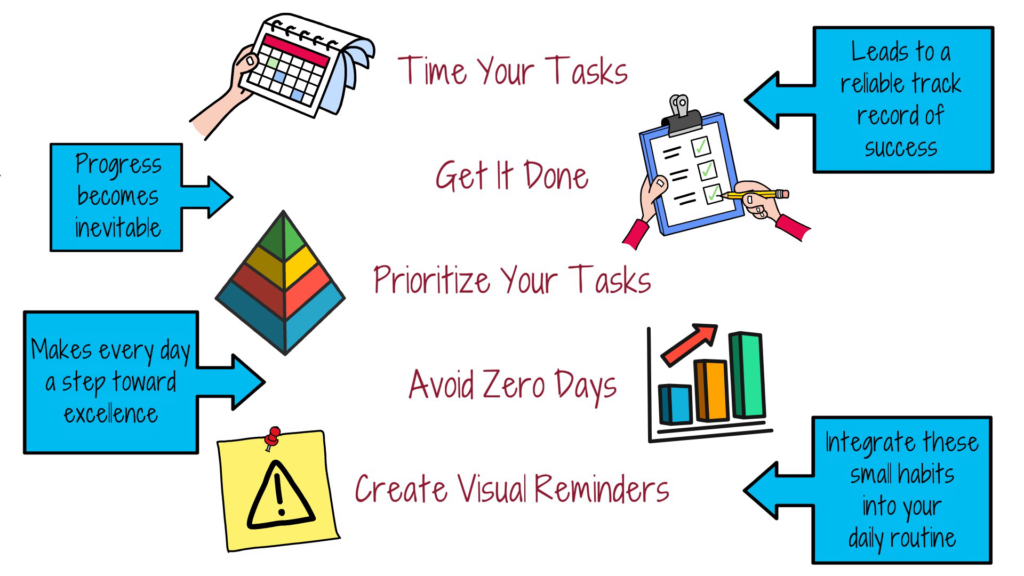
Take some time to plan and develop your own personalized system for consistency. Using these five basic tips can help you to get started.
- Have a pre planned schedule
- Include time to do some quick 2-minute tasks
- Prioritize the most important things first
- Be sure to make some type of progress every day
- Use visual cues for inspiration and to help stay on track
By developing a few small habits, you may find you really can be a master of consistency.
